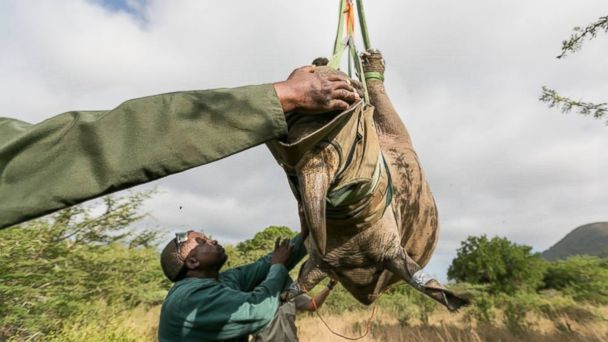It's a Bird! It's a Plane!…. It's a Rhino

(Em Gatland)
A South African photographer captured unbelievable photos of a rhino suspended more than 2,000 feet in the air in an operation called a "rhino lift" in which a helicopter relocated rhinos on South African animal reserves.
Freelance outdoor and wildlife photographer Em Gatland, 31, of Hilton, South Africa, tagged along with a crew relocating the endangered animals on a reserve in Northern Zululand. The lifts, which take place annually, take rhinos from public government owned animal reserves and fly them to large holding areas. The rhinos are under watch for five weeks to make sure they show no signs of stress and veterinarians are sure they are in good health. They are then auctioned to off to private reserves for breeding and safety, Gatland told ABC News.

(Em Gatland)
"A lot of people think that these animals are being harmed by airlifting them, but they are not. It is the easiest and safest way for them to be transported," Gatland said. 'They determine to lift specific rhinos depending on breeding patterns and population within a reserve."
Gatland told ABC News that she saw 30 rhinos lifted between April 1 and April 4.
"It's quite a complex procedure, but it is amazing," Gatland said.
The fairly new lifting procedure is done within 10-15 minutes and involves flying a helicopter over the rhinos to spot and dart them with anesthesia. Once tranquilized, a crew or 15 to 20 people hook the rhino upside down and attach the animal to a Vietnam-era Huey helicopter. The rhino is then quickly lifted and transported to the observation holding area, Gatland said.

(Em Gatland)
"This has had a lot of research done about it and in terms of a time span, this is the least amount of time they would be under anesthetic for," Gatland said."These animals are so endangered. There are many different factors in pouching of the rhino, but they are really dying at a rapid rate."
Relocating rhinos to privately owned animal reserves ensures their safety. There is 24-hour security there for them and a better chance for breeding, Gatland explains to ABC News.